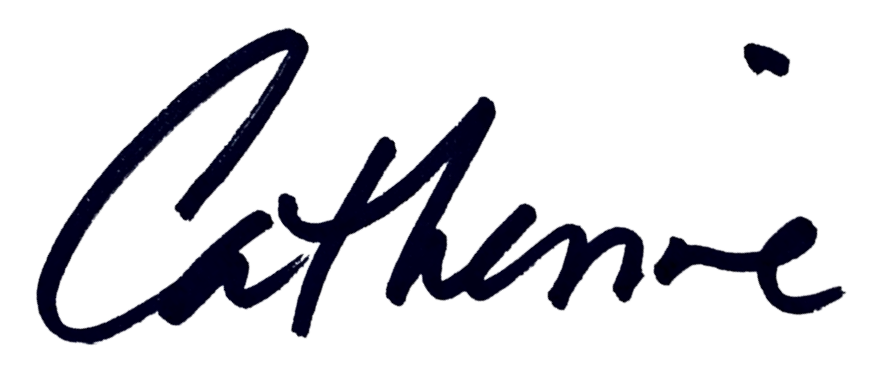Mental health awareness has surged in recent years, bringing valuable attention to conditions like ADHD, depression, and anxiety. However, this heightened focus may also drive a cultural shift toward pathologizing common human responses to an increasingly complex and high-stimulation world. While awareness is essential, there’s a fine line between validating mental health struggles and overdiagnosing them. The consequences of overdiagnosis—such as medication overuse and diminished personal agency—are critical issues that demand deeper scrutiny. In this article, I will focus on just one of these diagnoses, but the conversation could be applied to many common mental health challenges.
While awareness is essential, there’s a fine line between validating mental health struggles and overdiagnosing them.
Today, approximately 6% of U.S. adults are diagnosed with ADHD, totalling around 15.5 million individuals (CDC). Globally, ADHD prevalence is around 2.8%, yet many adults remain undiagnosed (ADDitude). A recent survey found that one in four U.S. adults suspects they may have undiagnosed ADHD, though only 13% have consulted a healthcare provider (New York Post). This growing demand for diagnosis raises the question: do these assessments always reflect a genuine neurodevelopmental condition, or could they sometimes capture context-driven struggles with attention in a hyper-stimulated world?
My Experience: Big Pharma and the Biomedical Model
Drawing from my decades-long experience in the pharmaceutical industry, I’ve observed firsthand how diagnoses and treatments can shape—and sometimes distort—our understanding of mental health. Pharmaceutical companies are incentivized to create medications for actual conditions, but they also face pressure to expand these markets, at times creating needs that weren’t previously recognized. Industry motivations, often driven by shareholder returns rather than patient welfare, fuel a push for ongoing revenue generation. This economic model can lead to expanded diagnostic criteria, allowing broader populations to fit labels they may not genuinely embody.
The biomedical model compounds this issue by focusing on treating symptoms rather than addressing underlying causes.
The biomedical model compounds this issue by focusing on treating symptoms rather than addressing underlying causes. For ADHD, this model often overlooks the critical role of lifestyle, environment, and social determinants of health, prioritizing symptom suppression over holistic treatments. Given the standard ADHD checklist—distraction, impulsivity, and lack of focus—nearly everyone might qualify for a diagnosis under today’s criteria. In my professional and personal conversations, I encounter people identifying as “ADHD” about 40-50% of the time, despite actual prevalence rates around 6-10%.
The Rise of Overdiagnosis and Overmedicalization
The concept of overdiagnosis is not new. Mental health diagnostic criteria have broadened over time, increasing ADHD diagnoses, particularly in adults. Some researchers argue that specific ADHD symptoms may reflect adaptive responses to a world requiring constant attention shifts rather than an inherent disorder (Nigg, 2017). If so, we may be interpreting everyday struggles in a high-stimulation environment as symptoms of ADHD. Add the recent rise in social media memes, self-diagnosis, and ‘therapy-speak,’ and we have a cultural phenomenon of identity labels and de-normalizing run-of-the-mill human emotions and experiences.
We may be interpreting everyday struggles in a high-stimulation environment as symptoms of ADHD.
For example, here are some questions clinicians can ask when assessing for ADHD. Based on this criteria, I often ‘have ADHD’.
Helpful Diagnostic Questions for Clinicians
Could you describe how it feels when you have to sit through a long movie or meeting?
Tell me how you did with being attentive in class in middle school compared to other students?
What is your experience when you try to read or focus on work for an extended period of time?
Have you ever made a mistake on an exam or at work that could have easily been prevented?
Do you often lose things like your keys or cell phone? If so, what do you do to keep track of them?
How likely are you to remember to do a task without writing it down (make a phone call, water the plants, do the laundry, etc.)?
What happens when you have a lot of tasks to do and need to get them all done?
Tell me about your ability to focus on things you like and want to do as opposed to harder less exciting things.
Do your friends and family ever ask you if you are paying attention to them? Do you feel you need to ask them to repeat something? Do you sometimes pretend you heard the conversation but actually didn’t?
Do you ever feel the urge to say whatever is on your mind right there and then, sometimes interrupt people? Does it ever get you in trouble with others? For example, losing friendships, or having difficulties with your boss?
Do you drink coffee? If so, how much and how do you notice it affects you?
Adapted from “Integrative Treatment for Adult ADHD: A Practical, Easy-to-use Guide for Clinicians” by Ari Tuckman (New Harbinger Publications, 2007). (Abdelnour, Jansen, Gold. 2022)
Mental health conditions can be transient, just as physical ailments often are.
A recent conversation with a colleague illustrated the nuanced nature of ADHD. Diagnosed a few years ago, she was at that time in a toxic relationship, postpartum, and met ADHD criteria. Medication provided relief from her symptoms, but it came with side effects like dissociation. Now, she has a healthy toddler, has left the toxic relationship, and no longer needs medication, feeling well without it. Her experience underscores that mental health conditions can be transient, just as physical ailments often are. A person may have symptoms for a time without defining their identity—much like someone with a respiratory infection or arthritis may experience symptoms but not adopt them as a core identity. This perspective challenges us to consider mental health diagnoses with similar flexibility.
The Limitations of Labels: Agency and Self-Definition
Labels can aid in understanding genuine mental health conditions, but overuse may foster self-limiting narratives. When someone identifies strongly with an ADHD diagnosis, for instance, they may interpret every attention lapse or impulsive act as “proof” of their diagnosis. This reliance on labels could limit agency, discouraging individuals from exploring ways to adapt and grow beyond the diagnosis.
Labels can aid in understanding genuine mental health conditions, but overuse may foster self-limiting narratives.
Erosion of Personal Agency and Adaptability
Overreliance on diagnoses can subtly erode personal agency, autonomy, and adaptability—all critical to mental health and resilience. When focus lapses, procrastination or motivation dips are attributed solely to ADHD, it becomes easier to externalize these behaviours rather than view them as areas for self-directed improvement. This mindset may inadvertently discourage personal growth, leading individuals to see themselves as less capable of change and more controlled by the diagnosis.
Rethinking ADHD in a Hyperconnected World
An emerging perspective suggests that ADHD-like symptoms may, in some cases, be adaptive responses to our hyperconnected world rather than expressions of a fixed neurodevelopmental disorder. This view does not diminish ADHD’s validity but proposes that certain cultural and environmental factors might amplify ADHD-like traits in individuals who would not otherwise display them.
- Social Determinants of Health and Environmental Factors: Socioeconomic status, access to education, and digital connectivity all shape mental health. Social determinants like financial insecurity or housing instability can contribute to heightened stress responses that may resemble ADHD. Without considering these contextual factors, there’s a risk of misdiagnosis and inappropriate treatment.
- Information Overload and Overwhelm: Our digital world demands constant shifts in attention, a pattern that can resemble ADHD symptoms in individuals without the disorder. Studies show that prolonged exposure to high-stimulation environments impacts focus, not necessarily as a disorder but as a natural response to overwhelming environments.
- Constant Connectivity via Devices and News Cycles: Dependence on digital devices fosters a culture of chronic distraction. Notifications, social media, and news updates act as “micro-stressors,” inducing a state of low-level stress that mimics ADHD attention challenges. At work, we are constantly ‘on’ several notification-style communication platforms, decreasing our ability to attend to anything.
- Adaptation Models and Cycles of Stimulation: Solomon’s “A/B Process Theory” suggests that after intense stimulation, the brain craves calm for balance. However, our continual re-engagement with stimulating content disrupts this balance, creating cycles that resemble ADHD-linked impulsivity and attention issues (Roberts et al., 2018).
- Self-Fulfilling Labels and Identity: Identifying with a diagnosis can lead to a self-fulfilling cycle. Individuals who believe they have ADHD may interpret normal lapses as symptoms, reinforcing the behaviours they wish to manage (Faraone, 2019). Although diagnoses can empower, overidentification risks reducing personal agency and amplifying symptoms rather than relieving them.
ADHD and Creativity: Divergent and Convergent Thinking in Creative Fields
Studies indicate that ADHD traits, especially at subclinical levels, may support creativity in specific settings, such as music. Research on divergent thinking—the ability to generate multiple novel ideas—suggests that traits like impulsivity and flexibility may enhance creativity by promoting unconventional perspectives (Hoogman et al., 2020). ADHD prevalence is notably high in creative fields, with musicians and artists often displaying traits that align with divergent thinking processes. This finding offers a counter-narrative to traditional ADHD framing, highlighting how ADHD traits can foster creative potential and unique contributions.
Studies indicate that ADHD traits, especially at subclinical levels, may support creativity in specific settings, such as music.
Furthermore, combining divergent and convergent thinking—the process of selecting a single optimal solution—is essential in creative fields, particularly where ethical and innovative standards must align. Musicians, for example, routinely blend these thinking styles to produce meaningful art that resonates. Exploring ADHD through this lens opens a pathway to viewing ADHD traits as strengths in specific environments rather than as deficits.
Conclusion: Embracing a Holistic View of Human Experience
It’s worth exploring whether some ADHD-like symptoms represent adaptive responses to our modern world rather than fixed traits.
It’s worth exploring whether some ADHD-like symptoms represent adaptive responses to our modern world rather than fixed traits. Recognizing this could inspire alternative management strategies, such as lifestyle adjustments, mindfulness practices, and screen-time limitations, to supplement or replace medication. It also helps us consider acute and chronic challenges and solutions.
This shifting conversation demands curiosity, flexibility, self-awareness, agency, compassion, and accountability, much like all aspects of our personal and collective mental health. As we evolve in our understanding, we are challenged to discern where the line lies between mental health conditions and natural responses to overstimulation. Broadening our perspective allows us to foster resilience, self-compassion, and agency, emphasizing that this dialogue is not solely about ADHD and other diagnoses but about safeguarding the depth of human experience in a society increasingly driven to diagnose and label every ordinary human response as if striving to flatline us into an unattainable ideal of constant happiness, comfort, organization, and calm.
This shifting conversation demands curiosity, flexibility, self-awareness, agency, compassion, and accountability, much like all aspects of our personal and collective mental health.



